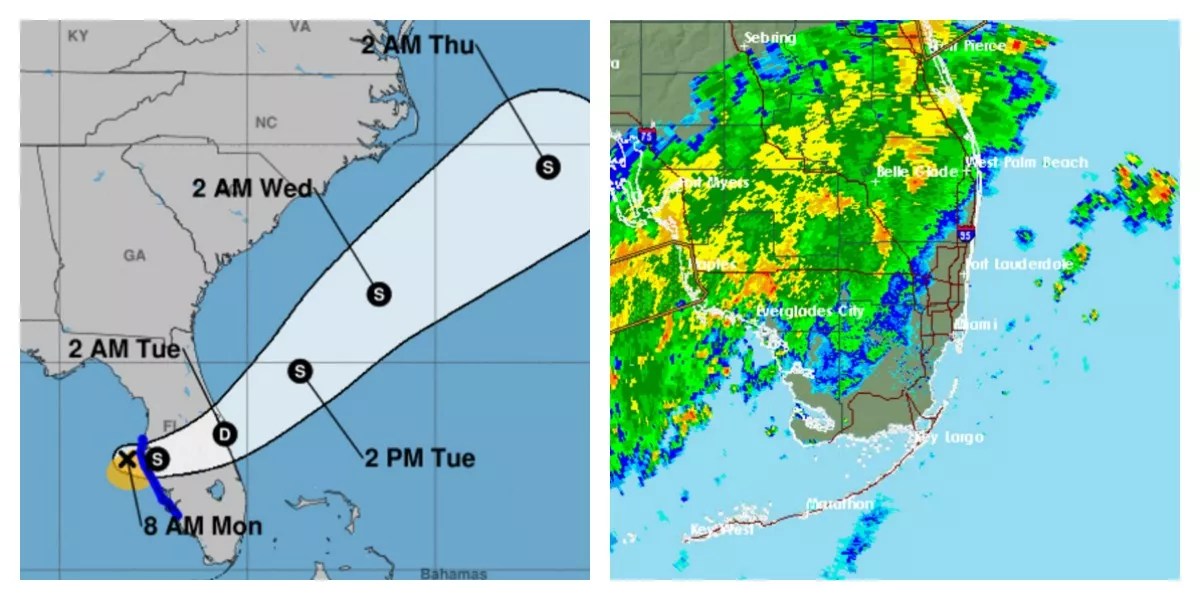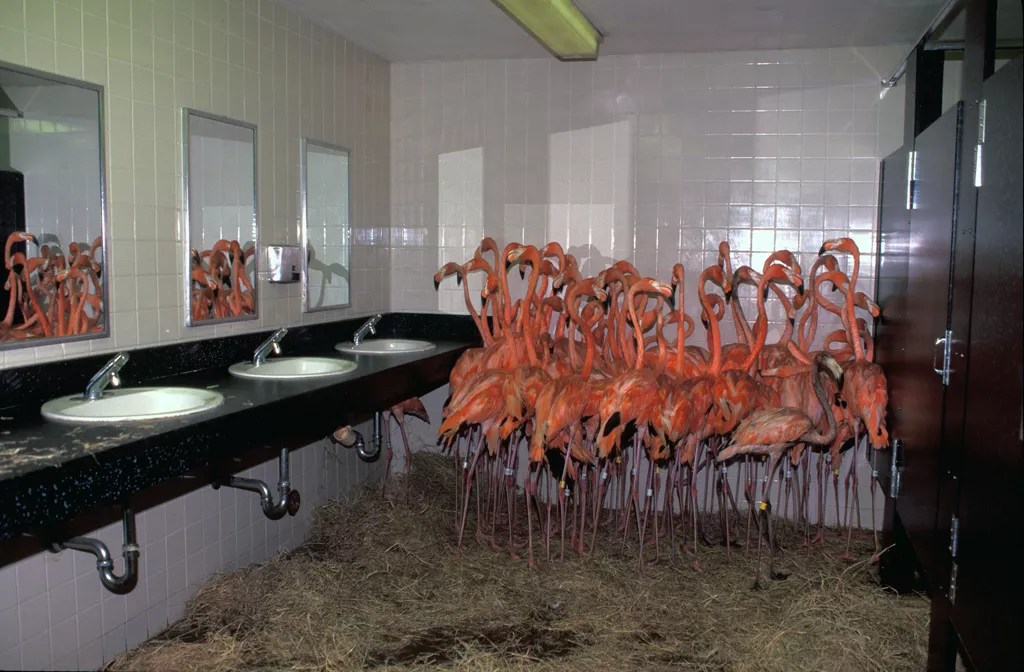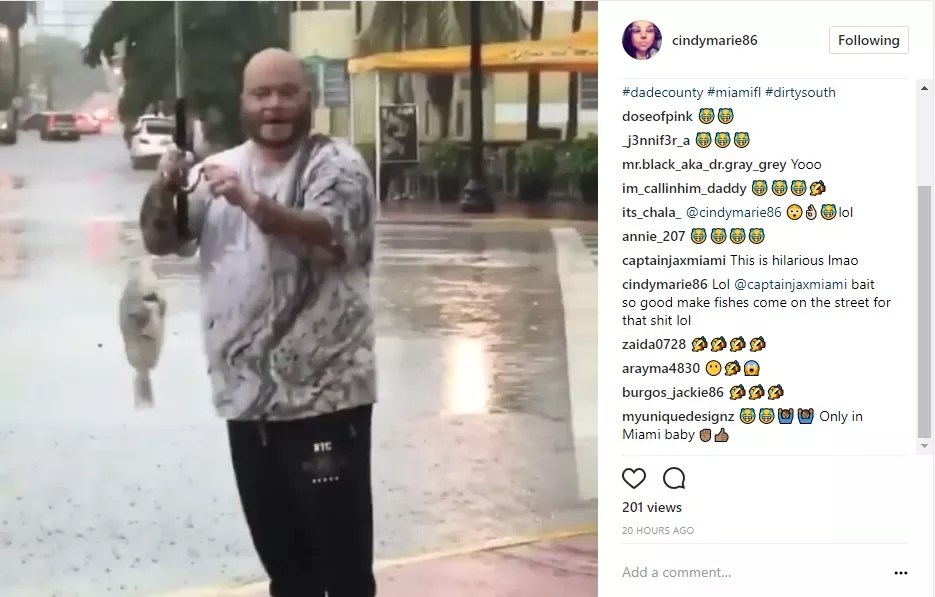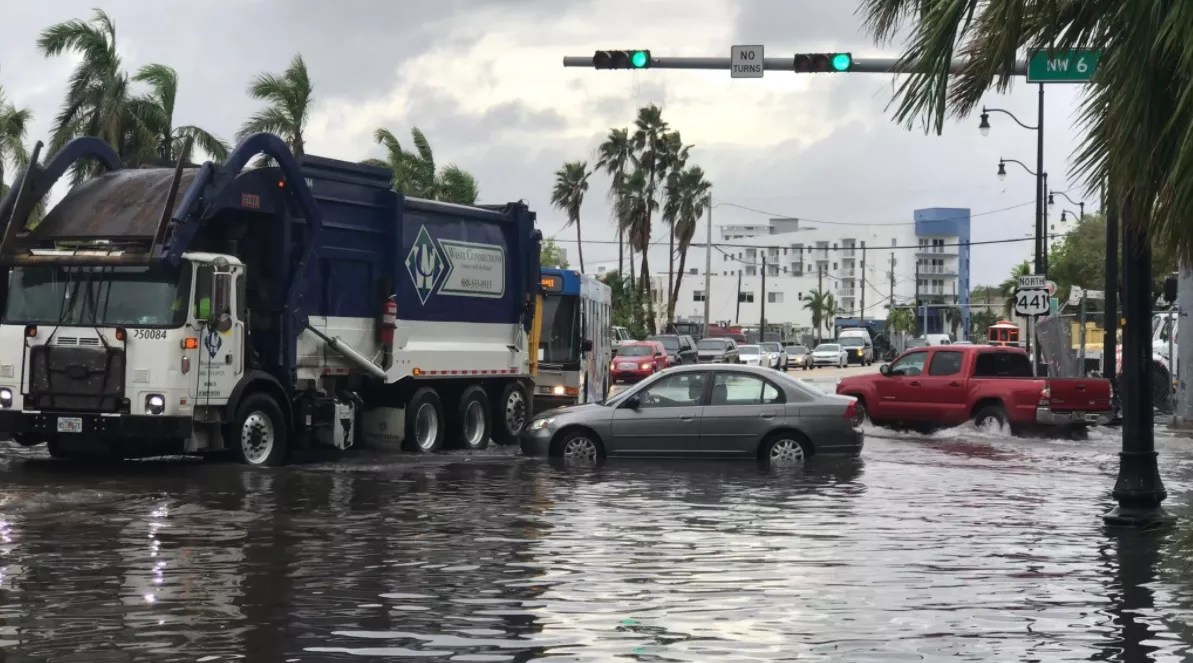
Courtesy of FPL

Audio By Carbonatix
Life in 2017 means grappling with the knowledge that manmade climate change is, at most, a few decades away from flooding Miami. Wedged between a threatened Everglades and a warming Atlantic Ocean and jeopardized by rising seas, salty water tables, and strengthening hurricanes, the Magic City is at the center of environmental news that’s impossible to ignore.
This year’s most-read environmental stories include Florida Power & Light’s contentious plans to store waste under Miami’s water supply, flash floods in South Beach, and a scramble to save Zoo Miami’s animals before Hurricane Irma struck.

Florida Power & Light
1. FPL Wins Fight to Store Radioactive Waste Under Florida Drinking Water
South Florida sits atop two gigantic underground stores of water: the Biscayne and Floridan Aquifers. Miamians get most of their drinking water from the upper Biscayne Aquifer, while the government has used the lower portion of the Floridian to dump waste and untreated sewage – despite the fact that multiple studies have warned that waste could one day seep into the drinking water.
So environmentalists are concerned that Florida Power & Light now wants to dump full-on radioactive waste into the that lower water table, called the Boulder Zone. A small group of activists called Citizens Allied for Safe Energy (CASE) tried to stop FPL’s plan, but their legal petition was shot down this past Friday.

Tropical Storm Emily hit Florida.
via NOAA
2. Tropical Storm Emily Overwhelms Miami Beach’s Anti-Flood System
Miami Beach has the second most properties threatened by rising seas in the world, so the city recently sank $500 million into a Sisyphean project to install up to 80 anti-flood pumps across the city. Though the system has helped suck away sunny-day tidal flooding, independent engineers have warned that the pumps likely won’t save the city during a major flood event: Last year, an engineer told New Times the pumps would probably fail during a hurricane because there are no backup generators if the city loses power.
Yesterday Miami Beach saw firsthand how the new anti-flood system works during a major storm. The tail end of Tropical Depression Emily (not even a tropical storm at this point) grazed Miami, and the amount of rain exceeded the pumps’ maximum capacity. Certain portions of the city ended up drowning under multiple feet of water. And according to city spokesperson Melissa Berthier, a brief power outage knocked two pump stations out in Sunset Harbour for 45 minutes. Multiple restaurants in the area, including Pubbelly and Sushi Garage, told New Times they were inundated.

Flamingos huddled in the men’s room at Zoo Miami during Hurricane Andrew.
Ron Magill/Zoo Miami
4. Zoo Miami Moves Animals Before Hurricane Irma
With Hurricane Irma now barreling toward South Florida, employees at the zoo have been working almost nonstop to make sure all the animals are safe, Magill says. None are being evacuated – such a relocation can be dangerously stressful for animals – though some will go inside concrete buildings. And this time around, the flamingos aren’t headed to the bathroom.
“I think I’ve gotten that question no less than 100 times in the last few days: ‘When are we putting the flamingos in the bathroom?'” Magill says. “That was just us using what we had available.”

Florida Power & Light sent customers in North Miami a letter earlier this month saying they’d be credited for years of overbilling.
Florida Power & Light’s Turkey Point Nuclear Generating Station is already leaking dangerous salt water into the aquifers that are Miami’s largest source of drinking water. Despite that alarming fact, the U.S. Nuclear Regulatory Commission (NRC) recently ruled that FPL can move forward with a plan to build two new nuclear reactors and store nuclear waste – including radioactive material – in an area just below those same aquifers.
Environmentalists warn a leak would threaten the water supply of 2.7 million people, but the feds last week ruled that such a leak is “not likely,” and that even if one were to occur, it “would likely be detected and resolved prior to any significant release to the Upper Floridan Aquifer,” one of Miami-Dade County’s two water stores.

cindymarie86 / Instagram
6. Viral Video Shows Miami Man Catching Fish in Miami Beach Flood
Miami flooded in biblical proportions last night thanks in part to rising seas and a warming planet. This goes without saying, but the deluge devastated Miami Beach business owners, people who own oceanfront property, and anyone who likes driving on streets that aren’t underwater.
However, the flooding has been wonderful for viral-video content producers and the hapless internet sleuths tasked with separating fact from fiction in the screaming maelstrom that is the 2017 social media landscape. This includes the tortured staffers at New Times, who have been flummoxed all day by a video that appears to show a man standing on the corner of Washington Avenue and Seventh Street in South Beach and catching an actual fish in the floodwater.

justice4monkeys / Imgur
7. Monkey Jungle Slammed by Critics Over Photos of Injured Ape, Dirty Cages
Monkey Jungle got its start in the ’30s when Joseph DuMond released a troop of monkeys into a dense patch of South Dade wilderness and then opened it as a one-of-a-kind attraction “where humans are caged and monkeys run wild.” More than seven decades later, the 30-acre roadside park – which allows some monkeys to roam freely while visitors gaze at them from an enclosed path – still makes that promise.But the park has come under fire this week after a person who claims to be a former employee posted online dozens of photos that purportedly show real conditions behind the scenes at the facility, including dingy, soiled cages and bleeding sores on the park’s gorilla, King.

Courtesy of Ethel Domiguez
8. Miami Beach Bulldozes South Beach Vegetation Where Feral Cats Lived
Every morning for the past seven years, Ethel Domiguez has fed the cats living in the tangle of vegetation on the beach behind her Collins Avenue condo building. But when she went down to the beach yesterday, she was horrified by what she saw: Workers were bulldozing everything.
Most of the vegetation lay in a heap. The seven or so cats were nowhere to be found.
9. Miami-Dade Might Finally Require Property Owners to Tell You About Toxic Contamination
After reading New Times’ story about the Overtown soil contamination – and the failure to inform residents about it – Miami-Dade Commissioner Audrey Edmonson is sponsoring an ordinance that would force property owners to post a notice of environmental contamination on polluted sites.
“That gave me the idea,” says Edmonson, who represents the district where the apartment building is located. “All these years, and no one has ever done anything about it.”

City of Miami
10. 2.5 Million Miamians Could Become Sea-Level-Rise Refugees, Most in Nation, Study Says
Now that Cuban migration into Miami has slowed, the city’s Republican legislators have pretty much decided that they hate refugees. State Rep. Carlos Trujillo in 2016 tried to give Gov. Rick Scott military power to police which refugees enter the state. And County Mayor Carlos Gimenez issued an order in January complying with Trump’s crackdown on undocumented refugees from impoverished Latin American countries.
But as long as those same GOP legislators continue to deny that climate change is real, they’re all but guaranteeing that the U.S. locks itself into a refugee crisis of its own. According to a study released this month in the peer-reviewed journal Nature, more than 2.5 million Miamians may someday be forced to flee the city thanks to rising seas – the most of any city in America.